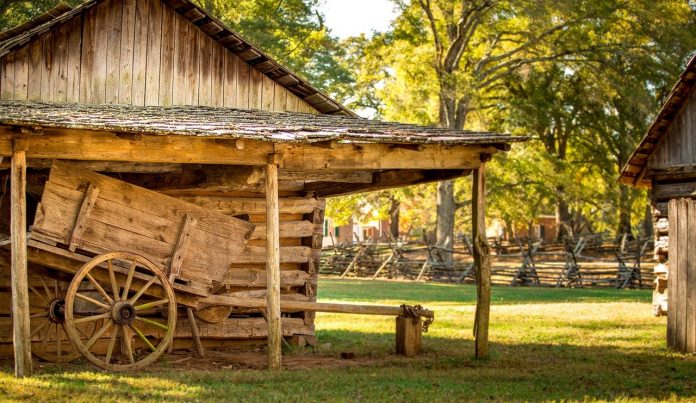One of the great developments in the decade which followed the end of the War of 1812 was the mass migration of tens of thousands of Americans into the land west of the Appalachian Mountains.
The West, of course, was not created overnight. Even before the American Revolution, American colonists had moved into the upper Ohio River valley.
In 1775, Daniel Boone and 30 axe men blazed the Wilderness Road through the Cumberland Gap and founded the Kentucky settlement of Boone’s borough. Settlers could follow the great valley road south to a connection with the Cumberland Gap and then head west into Kentucky.
To the north, routes such as Braddock’s Road and Forbes Road led to the forks of the Ohio River. By 1790, the population west of the mountains already totaled 200,000. More was yet to come.
Government help
A number of factors stimulated families to undertake the arduous journey westward. Not the least of these were policies and programs pursued by the federal government.
The Harrison Land Act of 1804 reduced the minimum amount of land a settler could purchase to a quarter section (160 acres) and the minimum price to $1.64 an acre. The act also granted credit for four years. Under this act, millions of acres of land were disposed of by the U.S.
As important as a liberal land policy in encouraging westward migration was the establishment of security along the frontier. This was achieved through both diplomatic and military measures. By treaties concluded with England and Spain in 1794 and 1795, respectively, Canadian and Florida boundary settlements were made and anti-American influence among the Indians was reduced.
The Louisiana Purchase of 1803 and the Adams-Onis Treaty in 1812 gave the U.S. title to the Gulf Coast west to the Sabine River, while the War of 1812 crushed Indian military power in the eastern Great Lakes region. With reasonable security thus obtained, the land proved more attractive to potential settlers.
Inventions
Applying largely to the South, another factor that stimulated western migration was the invention of the cotton gin in 1793. This innovation opened up most of the land in the South to the production of black-seed, long fiber, upland cotton. This type of cotton found its major market feeding the mouth of the enormous textile machinery that needed nourished in England since the beginning of the 19th century.
Cheap fertile land to the west and depleted land in the east caused a great shift of cotton production to the Trans-Appalachian area between 1815 and 1835. An ingredient applying largely to the North, was the construction of the Erie Canal, completed in 1825.
A final factor, applicable to all sections, was the invention and quick exploitation of the steamboat. By the late 1820s, the rivers were so crowded with steamboats that, as one minstrel wag told it, “the fish petitioned Congress for preemption rights.”
The results of these factors working together was the rise of a new section — the West. In 1790, about 95% of the total population resided east of the mountains; by 1820, about 20% was west of the mountains.
Settlers poured over the mountains, walked alongside the oxen and horses through the valleys or moved on the Erie Canal with their most cherished possessions in search of land and opportunities.
Expansion and politics
Between 1790 and 1812, the Western states of Kentucky (1792), Tennessee (1796), Ohio (1803), and Louisiana (1812) were admitted to the Union. Then in brisk fashion came the states of Indiana (1816), Mississippi (1817), Illinois (1818), Alabama (1819), and Missouri (1821).
Michigan and Arkansas were organized into territories in 1805 and 1819, respectively. This development had momentous political and economic consequences for the nation.
By 1820, there were 18 new Senators in Congress from the west. No longer could the older regions ignore the Western interest. Politics in America took on an increasingly sectional tone after 1815, which made political parties even more important since they were the sole vehicle through which national interest could contest with sectional interests.
It was the era in which northern and southern sectionalism was brought into sharp focus over the question of slavery in Missouri. It was the years in which “manifest destiny” began to get out of hand.
It was a time of great diplomatic achievement when the U.S. was freed of European intervention by the Monroe Doctrine. It was a period when the objectives and needs of the West and South had little apparent differences. Economically, the postwar migration of 1812 was of vast importance.
New land was brought into production, towns were developed, market patterns were established, and industries were created. The opening of the West was an incentive to further movement westward, and wave after wave passed on, bringing with them still newer needs and wants that stimulated new lifestyles.
These driving, quiet, and stout settlers persevered the drudgery of pioneer life, disease and cures, the social setting, trade, travel, transportation and reforms to develop the West first with a trickle of migration that turned into a flood.
That’s your history!













